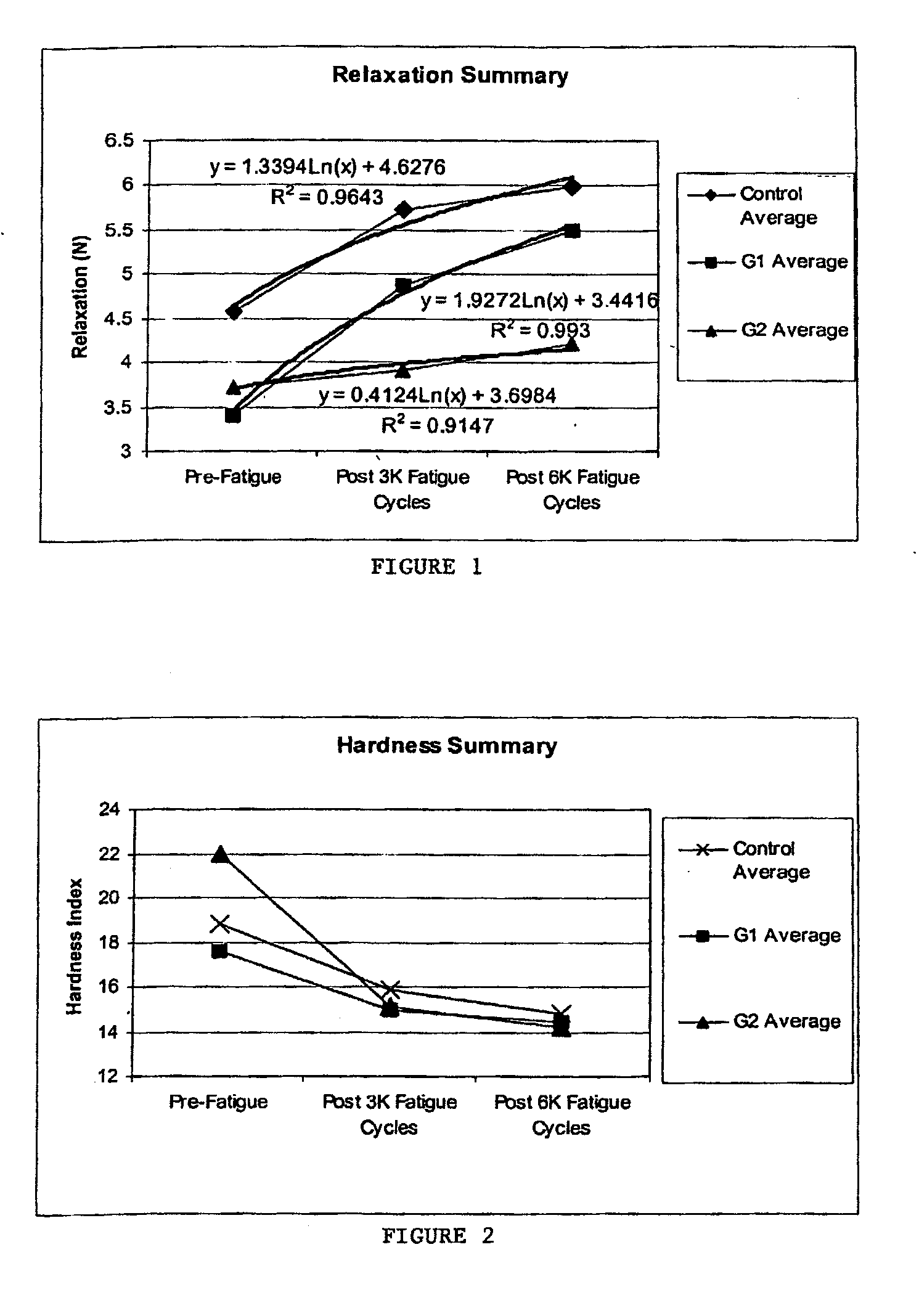Use of non-toxic crosslinking reagents to improve fatigue resistance and reduce mechanical degradation of intervertebral disc and other collagenous tissues
a collagenous tissue and fatigue resistance technology, applied in the field of tissue treatment, can solve the problems of discs being more vulnerable to mechanical degradation, the current treatment of spinal instability and low-back pain, spinal fusion, etc., and achieve the effect of improving the resistance of collagenous tissues
- Summary
- Abstract
- Description
- Claims
- Application Information
AI Technical Summary
Benefits of technology
Problems solved by technology
Method used
Image
Examples
examples 1 and 2
[0036]Thirty-three lumbar intervertebral joints were obtained from ten four-month-old calf spines. The intervertebral joints were arbitrarily divided into 3 groups: untreated controls-12 specimens, Genipin treatment 1 (G1)-6 specimens, and Genipin treatment 2 (G2)-13 specimens. The G1 treatment involved 72 hours of soaking the whole specimen in PBS with a 0.033% concentration of Genipin.
[0037]Similarly the G2 treatment involved 72 hours of soaking whole specimens in PBS with 0.33% concentration of Genipin. 0.33% Genipin in PBS is produced by dilution of 50 ml of 10×PBS (Phosphate Buffered Saline) with distilled water by a factor of 10 to give 500 ml (500 gm) of PBS and mixing in 1.65 grams of genipin to produce the 0.33% (wt %, gm / gm) solution. Previous testing with pericardium and tendon tissue samples demonstrated the reduction of tissue swelling (osmotic influx of water into the tissue) resulting from crosslinking the tissue. Some controls were not subjected to soaking prior to f...
PUM
| Property | Measurement | Unit |
|---|---|---|
| time | aaaaa | aaaaa |
| resistance | aaaaa | aaaaa |
| concentration | aaaaa | aaaaa |
Abstract
Description
Claims
Application Information
 Login to View More
Login to View More - R&D
- Intellectual Property
- Life Sciences
- Materials
- Tech Scout
- Unparalleled Data Quality
- Higher Quality Content
- 60% Fewer Hallucinations
Browse by: Latest US Patents, China's latest patents, Technical Efficacy Thesaurus, Application Domain, Technology Topic, Popular Technical Reports.
© 2025 PatSnap. All rights reserved.Legal|Privacy policy|Modern Slavery Act Transparency Statement|Sitemap|About US| Contact US: help@patsnap.com

